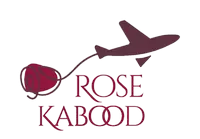Isfahan or half of the world is a capital of culture of Iran that is flourished between 9th and 18th centuries under the Safavid dynasty. It is beautiful in every season especially in spring and autumn with its opulent gardens and palaces, decorative arts, gorgeous bridges and its market and bazaars. You can enjoy by visiting Naqsh-e jahan Sq. the Imam Mosque, Sheikh Lotfollah Mosque, Ali Qapu and Chehel Sotun Palace. Artistic productions including handmade crafts are very potent culture representatives, especially for countries with traditional civilization. Iran owns wealth of ancient masterpieces from old, middle and modern areas.
List of top Isfahani Food
Isfahan has many local food but the first name that comes to mind is Beryan. This delicious food is especially for meat lovers taste. You can eat in Haaj Mahmoud and Shad restaurents.
Souvenirs
Isfahan is called the city of Iranian handicraft and fine arts. In Naqshe Jahan Square, there are a lot of traditional shops such as Khatam kari ( woodwork ), carpet weaving, porcelain, engraving, miniature, painting, Moaragh, tile art, brocade, calico work and Mina kari.
Naqsh-e Jahan Square
Here is historic walking areas with lovely malls that you would like to buy. You are surprised how much it is lively. It contains two historical mosques, Shah Mosque and Sheikh Lotfollah Mosque, and one historical palace under the name Alighapoor Emarat. You can see Qeysarieh bazzar in this area.
Sheikh Lotfollah Mosque
It is a religious site but it has no minarets and didn’t need the specific call by the muezzin because it was used only by the royal family and it was a private mosque for the ruler and his family. Although it is not the biggest mosque but it’s stunning. Definitely you enjoy seeing it in afternoon.
The Shah Mosque
It was built in the 16th with vision of magnificence for public use while it has the largest dome in the city. The port of the mosque measures 27m high, crowned with two minarets 42m tall. This building has four iwans and arcades. The arches are framed by turquoise ornament and decorated with rich stalactite-like tilework called muqarnas, a distinct feature of Persian Islamic.
Ali Qapu palace
From the castle you can have a gorgeous view from the square and from the mountains. It has six floors, on the third floor there is a marble tank and on top of the floor there is a famous music room. A fantastic point of this palace is the number of the floors that it is different in different sides.
Qeysarie Gate is a historical entrance to the main bazaar of Esfahan and is considered as a part of the complex of Naqsh-e Jahan Square – the main attraction of Esfahan. Along with Naqsh-e Jahan Square, the gate is registered as UNESCO World Heritage Object and is a popular destination for tourists visiting Esfahan.
Zayande Rood
Esfahan is known to have the beautiful river in which it is flowing. The river is famous because of lively, “Zayande” means alive & “Rood” means river, a river that is alive in the heart of Esfahan along with parks on either side of the river. And the existence of five old bridges which were built on the river bed in the 17th century, adds beauty to the ancient city.
Famous Bridges
Khaju Bridge
This bridge is gorgeous especially at night with its yellow lights. It is crowded in thursday night that people sing and dance.
Si-O-Se-Pol Bridge
It is known as Allahverdi Bridge. Is one of the eleven Esfahan bridges, crossing Zayandehrud River. It is the most famous bridge because of its size, central location and architecture.
Shahrestan Bridge
It is the oldest bridge on Zayandehrud River and the foundations are from the 3rd to 7th century Sasanian era.
Chehel Sotun Palace
This is one of the outstanding royal palaces of the Safavid dynasty which was built in 1647. It has the twenty giant pine pillars that their reflection in the pool beside the rectangle pool in front of the palace causes that it has been shown forty pillars. The walls in the palace are surrounded by exquisite frescoes that reflect the daily life of Safavids and others scenes.
Motamedi House of Isfahan
Mollabashi Historical House is one of the most beautiful houses among all others and it related to Safavid dynasty.
Shaikh Bahayi bath
One of the manifestation of architecture in designing buildings is Sheikh Bahayi bath because
The water of it gets warm without using a direct energy source it means use an ever-burning candle.
souvenir
Mina kari (enamelwork)
Mina kari is the art of hand painting delicate floral patterns on utensil. The dominating blue color is a beautiful Persian blue that is bound to catch anyone eyes in the room.
Khatam kari (wood work)
Khatam kari is a Persian version of marquetry, the art of decorating wooden surfaces with small and delicate pieces of wood, bone and metal to make mirrors, jewellery boxes, pans and furniture.
Miniature painting
Isfahan is home to some of the best miniature artists and you can see inspiration from them on wall paintings in Chehel Sotun Palace. Miniature is done on all sorts of surfaces and even on ivory.
Ghalam zani (engraving on metal)
Engraving is the art of curving superb designs on various metals such as copper, brass, silver and gold.

